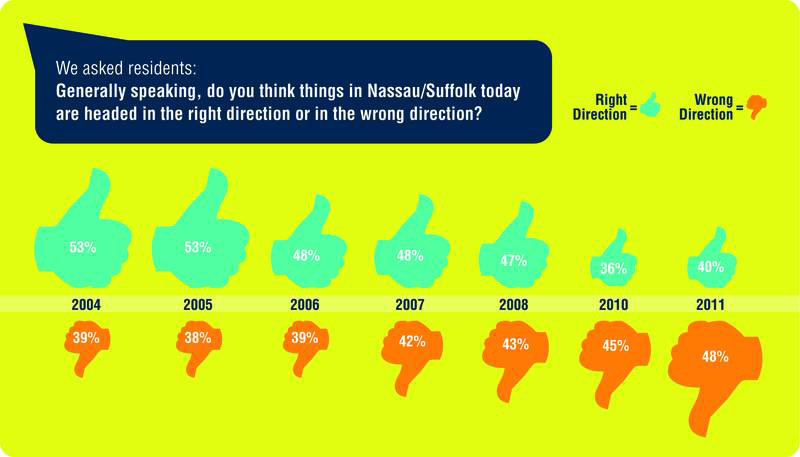Long Island Index issues a challenge
Region at ‘tipping point’ to becoming great — or fallow
Long Island has incredible potential. It can either become a modern, innovation-spurring suburban area with high-paying jobs, or it can wallow and fade away into obscurity.
That was the general message at the launch event for the 2012 Long Island Index Report, published annually for the past nine years by the Rauch Foundation. This year’s report, the first-ever Long Island Innovation Index — prepared by California-based Collaborative Economics, Inc. — describes Long Island on “tipping point:” the region can become a Mecca of innovation, but only if the resources we have are used wisely.
Mary Walshok was the keynote speaker at the event. Walshok is the Associate Vice Chancellor for Public programs and Dean of Extension at the University of California San Diego. Author of the forthcoming book “Invention and Reinvention: the Evolution of San Diego’s Entrepreneurial Economy,” she spoke about the history of San Diego and how the city reinvented itself from an economy based primarily on defense contracting (like Long Island used to be) to the city it is today.
“It’s so easy for places like San Diego and Long Island to live in the past and not realize that you can build on the past,” she told the crowd of more than 300 people who attended the launch event at Farmingdale State College.
The 2012 report says that Long Island has the potential to become an “innovation
powerhouse” along the lines of Silicon Valley, San Diego and Raleigh-Durham. But to do that, Long Island has to make the best use of the assets it has
available.
And we have the
resources. Long Island is home to world-class research institutions like Cold Spring Harbor Laboratory and Brookhaven National Laboratory. And our colleges, like Hofstra, are excellent as well.
Federal funding for research and development (R&D) increased 25 percent from 2009 to 2010, going from $243 million to $304 million. Since 2005, federal R&D money in the area has increased by 54 percent, while it’s dropped by 12 percent nationally.
Investment capital — money used to start new businesses — is also on the rise on Long Island. It nearly tripled from 2009 to 2010, toping at $21.4 million. But that’s lower than $46 million Long Island had in 2005.






